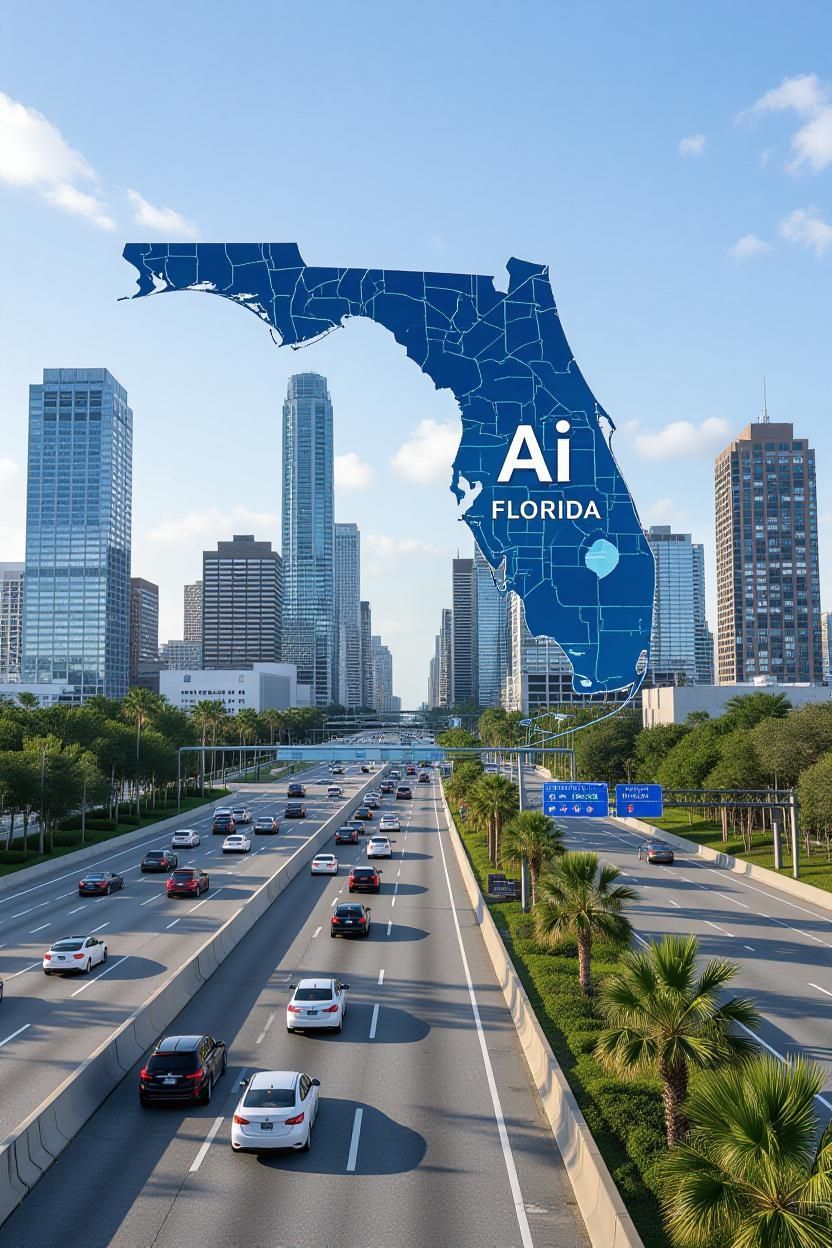Backlink Building Authority, Trust & Rankings for Florida & Global Businesses
In today’s competitive search landscape, backlinks are more than just hyperlinks — they’re digital endorsements of your brand’s credibility. At NinjaAI, we help businesses in Florida, across the United States, and around the world build high-quality, relevant backlinks that boost search rankings, drive targeted traffic, and enhance brand authority.
Our backlink strategies are white-hat, data-driven, and AI-enhanced, ensuring that every link we acquire works toward long-term SEO success without risking penalties.
Table of Contents
Why Backlinks Still Matter in SEO
Our AI-Enhanced Backlink Strategy
Types of Backlinks We Build
Industries We Serve with Backlink Services
U.S. & Global Cities We Deliver To
How Backlinks Fit with SEO, GEO & AEO
Case Studies & Success Results
Our Link-Building Tech Stack
How We Ensure Quality & Compliance
Getting Started
Frequently Asked Questions (FAQ)
1. Why Backlinks Still Matter in SEO
Backlinks remain one of Google’s top ranking factors. They serve as signals that your website is trusted and valuable. High-quality backlinks can:
Improve organic rankings
Increase domain authority
Drive referral traffic from relevant sources
Enhance brand visibility across industries and locations
2. Our AI-Enhanced Backlink Strategy
We combine traditional link-building best practices with AI-powered research tools like Search Atlas, Ahrefs, and Semrush to:
Identify high-authority sites in your niche
Analyze competitor backlink profiles
Personalize outreach campaigns for maximum response rates
Monitor and maintain link health over time
3. Types of Backlinks We Build
Guest Posts on industry-leading websites
Editorial Mentions in online publications
Local Citations for geographic SEO boosts
Resource Page Links from relevant niche sites
AI Search Mentions to improve GEO & AEO rankings
Influencer Collaborations for natural link placement
4. Industries We Serve with Backlink Services
Law Firms & Legal Services
Healthcare & Med Spas
Real Estate & Property Developers
Luxury Brands & Retail
Hospitality & Tourism
Finance & E-commerce
Technology & SaaS Startups
Home Services & Local Businesses
5. U.S. & Global Cities We Deliver To
United States: Orlando, Miami, Tampa, Jacksonville, Washington DC, New York City, Kansas City, Los Angeles
Global: London, Paris, Singapore, Hong Kong, Bangkok, Seoul
6. How Backlinks Fit with SEO, GEO & AEO
SEO: Backlinks improve search engine trust and keyword rankings.
GEO: We secure links that AI engines recognize as authoritative for generative search results.
AEO: We aim for link placements in high-trust sources so AI assistants surface your brand as an answer.
7. Case Studies & Success Results
Law Firm (NYC): Increased organic traffic by 120% in 6 months with targeted editorial links.
Luxury Retailer (Paris): Improved global rankings for competitive product keywords with niche backlinks.
Real Estate Agency (Miami): Ranked #1 locally by building local citations + high DA property site links.
8. Our Link-Building Tech Stack
Search Atlas (AI-powered backlink analysis)
Ahrefs & Semrush (competitor link intelligence)
BuzzStream & Pitchbox (outreach automation)
Majestic SEO (link trust analysis)
9. How We Ensure Quality & Compliance
White-Hat Only: No spammy link farms or black-hat tactics
Relevance First: Every link comes from niche-relevant sources
Authority Standards: Minimum domain authority thresholds
Diverse Link Profiles: Balanced between dofollow/nofollow, high DA, and traffic-rich sources
10. Getting Started
Book a Backlink Strategy Call
Receive a Backlink Opportunity Report
Launch Your Campaign & Monitor Results
11. Frequently Asked Questions (FAQ)
Q1: Are backlinks still important for SEO in 2025?
Yes — backlinks remain a top ranking factor for Google and influence AI-driven search visibility.
Q2: Do you guarantee rankings with backlinks?
We guarantee quality and relevance; rankings depend on multiple SEO factors, not just links.
Q3: How do you find backlink opportunities?
We use AI-powered tools to analyze competitors, research industry sites, and identify high-trust domains.
Q4: Will I get penalized for your backlinks?
No. We follow strict white-hat practices to keep your site safe.
Q5: Can you build local backlinks?
Yes — we specialize in local citations, business directory listings, and hyperlocal outreach.
Q6: Can backlinks help with GEO & AEO?
Absolutely. Backlinks from trusted sources improve your brand’s authority in AI-generated results.
Q7: How long until I see results?
You may see initial improvements in 2–3 months, with stronger results building over 6–12 months.
Q8: Do you remove toxic backlinks?
Yes. We can audit and disavow harmful links to protect your rankings.
Q9: Do you work with all industries?
Yes — from small local businesses to global brands.
Q10: Will I own the link placements?
Yes. All placements we secure for you remain yours permanently unless removed by the publisher.
--
Backlinks are one of the most important factors in search engine optimization (SEO) and remain a cornerstone of ranking well in Google and other search engines. Simply put, a backlink is a link from another website to your own. Each backlink acts as a signal to search engines that your content is valuable, trustworthy, and worth showing to more users. The more high-quality backlinks you have, the more likely your website is to appear higher in search results. But while backlinks can boost visibility, not all links are created equal, and the wrong approach can do more harm than good.
Search engines use backlinks as part of their algorithms to determine authority and relevance. Think of backlinks as votes of confidence from other websites. If a reputable, industry-related website links to your page, search engines interpret that as an endorsement of your expertise. However, if your site is linked from spammy, irrelevant, or low-quality sources, that can signal the opposite. Google’s algorithms, including its Penguin updates, specifically target manipulative link-building practices, so quality and relevance matter far more than sheer volume.
The best backlinks come from authoritative, relevant sources within your industry or niche. For example, if you own a law firm, a link from a respected legal blog or a professional association’s website carries more weight than dozens of random links from unrelated sites. These high-quality backlinks not only improve your search rankings but can also send targeted referral traffic — visitors who are already interested in your services or products. This dual benefit makes backlinks one of the most powerful assets in a long-term SEO strategy.
Earning backlinks naturally is often referred to as “white hat” link building. This involves creating valuable, shareable content that others in your industry want to reference. Blog posts, research studies, infographics, and in-depth guides are all examples of content that can attract organic backlinks. If your content answers important questions, provides unique insights, or presents original data, other websites are more likely to link to it as a resource. This is why content marketing and link building are so closely connected — without strong content, it’s difficult to earn quality backlinks.
In addition to content creation, outreach plays a critical role in building backlinks. Outreach involves identifying relevant websites, blogs, and online publications in your niche and pitching them content or collaboration ideas. This could mean offering to write a guest post, contributing a quote for an expert roundup, or suggesting that your resource be added to an existing article. Effective outreach requires personalization — sending generic link requests to hundreds of websites rarely works. Instead, tailoring your approach to each target site and explaining the mutual benefits can dramatically improve your success rate.
Digital PR (public relations) is another powerful backlink-building strategy. When your business is mentioned in news articles, interviews, or feature stories, you often gain high-quality backlinks from media websites. These editorial links tend to carry significant authority because they come from trusted publications. Businesses can generate PR opportunities by issuing press releases, responding to journalist queries on platforms like Help a Reporter Out (HARO), or collaborating with local news outlets to share expert commentary on relevant topics.
Internal linking should not be overlooked in a backlink discussion. While internal links (links from one page on your site to another) do not count as backlinks in the traditional sense, they play a vital role in SEO by helping search engines understand your site structure and by distributing page authority throughout your domain. When combined with high-quality external backlinks, a strong internal linking strategy ensures that link equity flows to the most important pages on your site.
One of the key mistakes businesses make with backlinks is focusing on quantity over quality. In the early days of SEO, it was possible to rank higher simply by acquiring large numbers of backlinks, regardless of their source. Today, that approach is outdated and risky. Search engines now penalize sites that engage in link schemes, purchase large volumes of links, or participate in private blog networks (PBNs). A small number of highly relevant, high-authority links is far more valuable than hundreds of low-quality links.
Monitoring your backlink profile is essential to maintaining SEO health. Tools like Ahrefs, SEMrush, and Google Search Console allow you to track which sites are linking to you, identify potentially harmful links, and spot opportunities for further outreach. If you find spammy or irrelevant backlinks that could harm your rankings, you can use Google’s Disavow Tool to tell the search engine to ignore them. Regular backlink audits help ensure your link profile stays strong and penalty-free.
Backlinks also work best when they are part of a broader, well-rounded SEO strategy. While they can significantly boost rankings, relying solely on link building without addressing on-page SEO, technical optimization, and content quality is unlikely to deliver sustainable results. Search engines consider hundreds of factors when ranking websites, and backlinks are just one piece of the puzzle. However, because they are a powerful indicator of authority and trust, they can often be the difference between ranking on page one or page three.
Local businesses can benefit from a targeted approach to backlink building. Getting listed in reputable local directories, partnering with community organizations, sponsoring local events, and earning coverage from local news outlets can all lead to valuable backlinks. These local links not only improve rankings for geographically targeted keywords but can also drive real customers to your business. For example, a restaurant that earns backlinks from the local chamber of commerce, tourism websites, and food bloggers in the area can improve both visibility and foot traffic.
Social media, while not a direct ranking factor, can amplify backlink efforts. When your content is shared widely on platforms like LinkedIn, Facebook, and X (formerly Twitter), it increases the chances of being seen by bloggers, journalists, and industry professionals who may choose to link to it. Combining a strong content promotion plan with proactive outreach ensures that your work gets in front of the right audiences.
In conclusion, backlinks remain one of the most powerful levers for improving SEO performance, but they require a thoughtful, strategic approach. The goal is to earn links from reputable, relevant sources by producing high-quality content, engaging in personalized outreach, leveraging digital PR, and participating in your industry’s online community. Quality always trumps quantity, and the most valuable backlinks are those that not only help you rank better but also drive targeted, interested visitors to your site. When managed correctly, backlinks are not just an SEO tool — they are a long-term investment in your brand’s authority, visibility, and credibility.
Local Keyword Research
Geo-Specific Content
High quality AI-Driven CONTENT
Localized Meta Tags
SEO Audit
On-page SEO best practices
Competitor Analysis
Targeted Backlinks
Performance Tracking






















